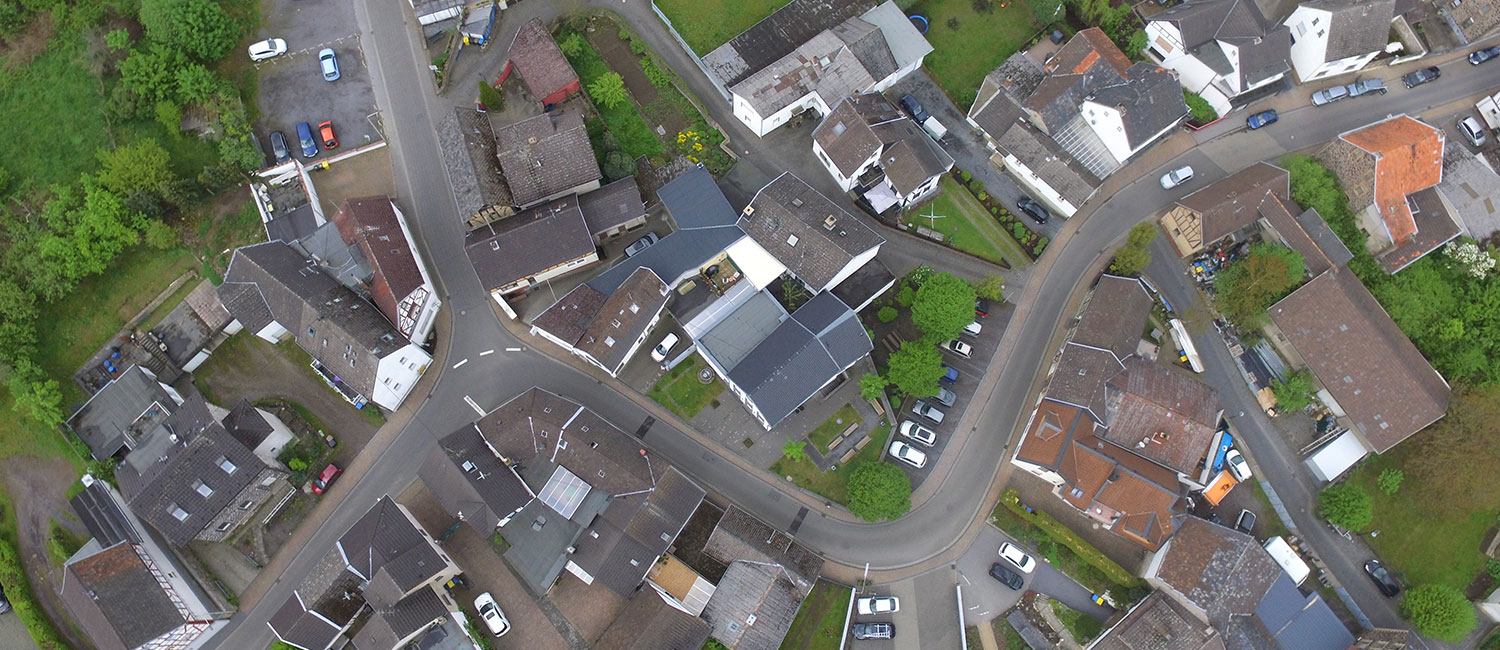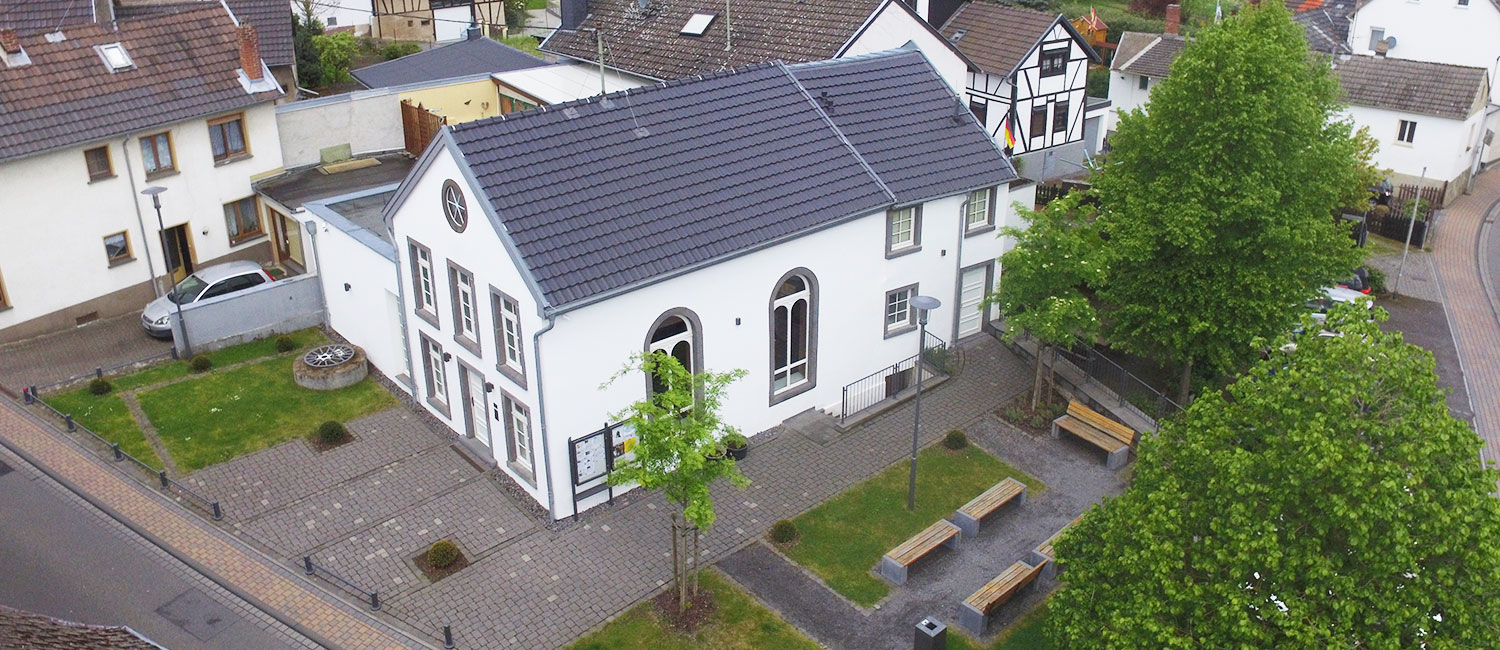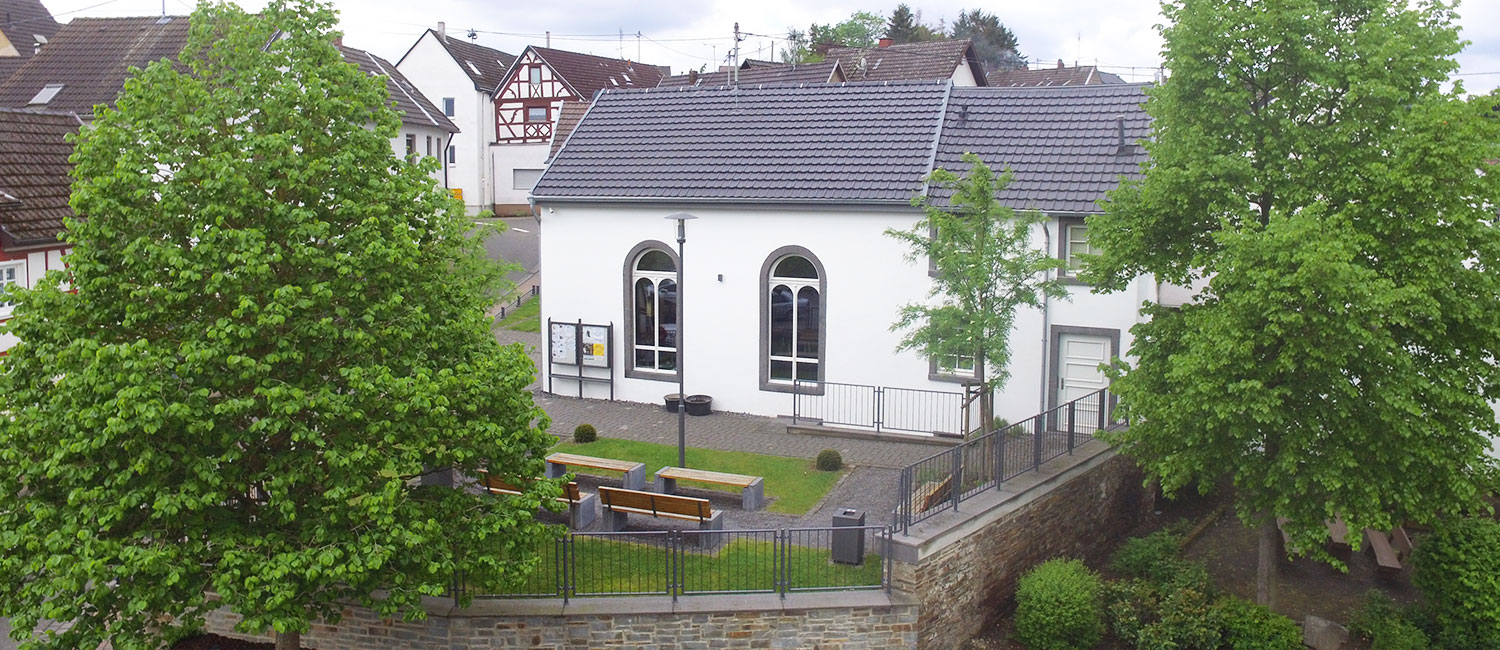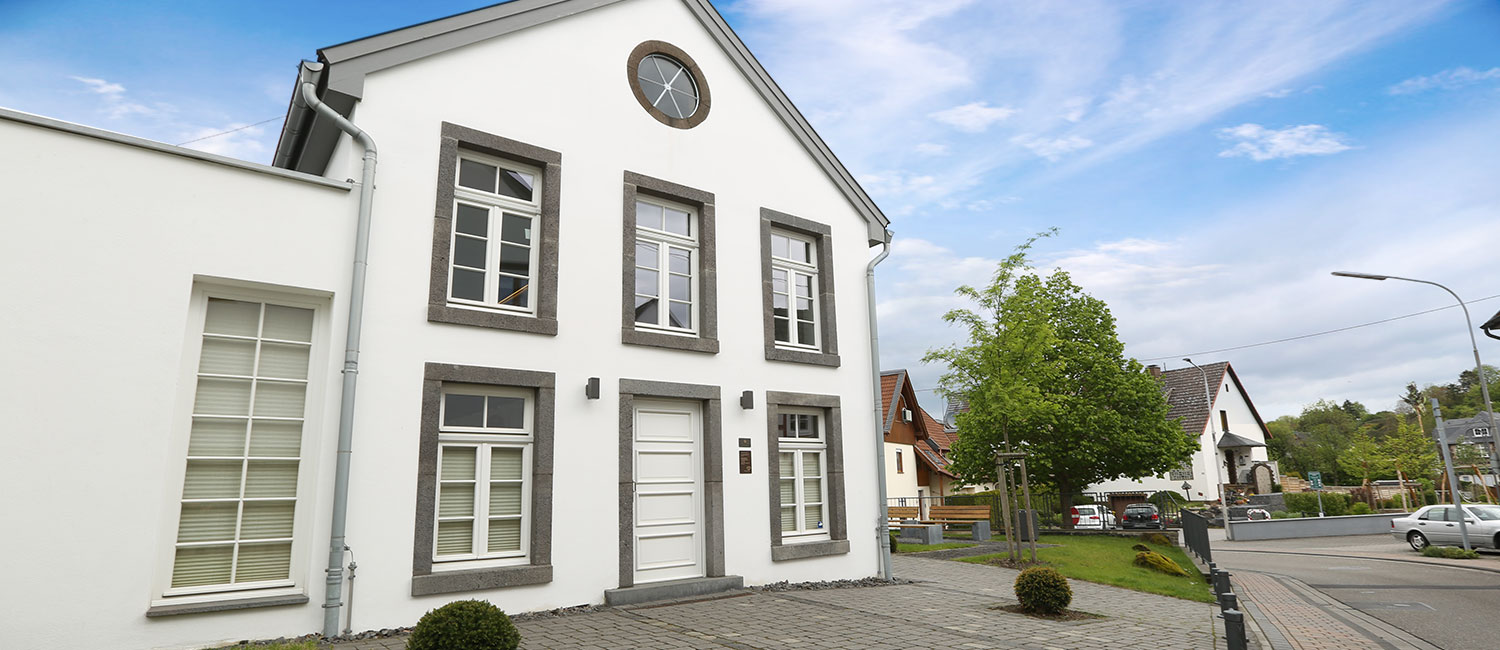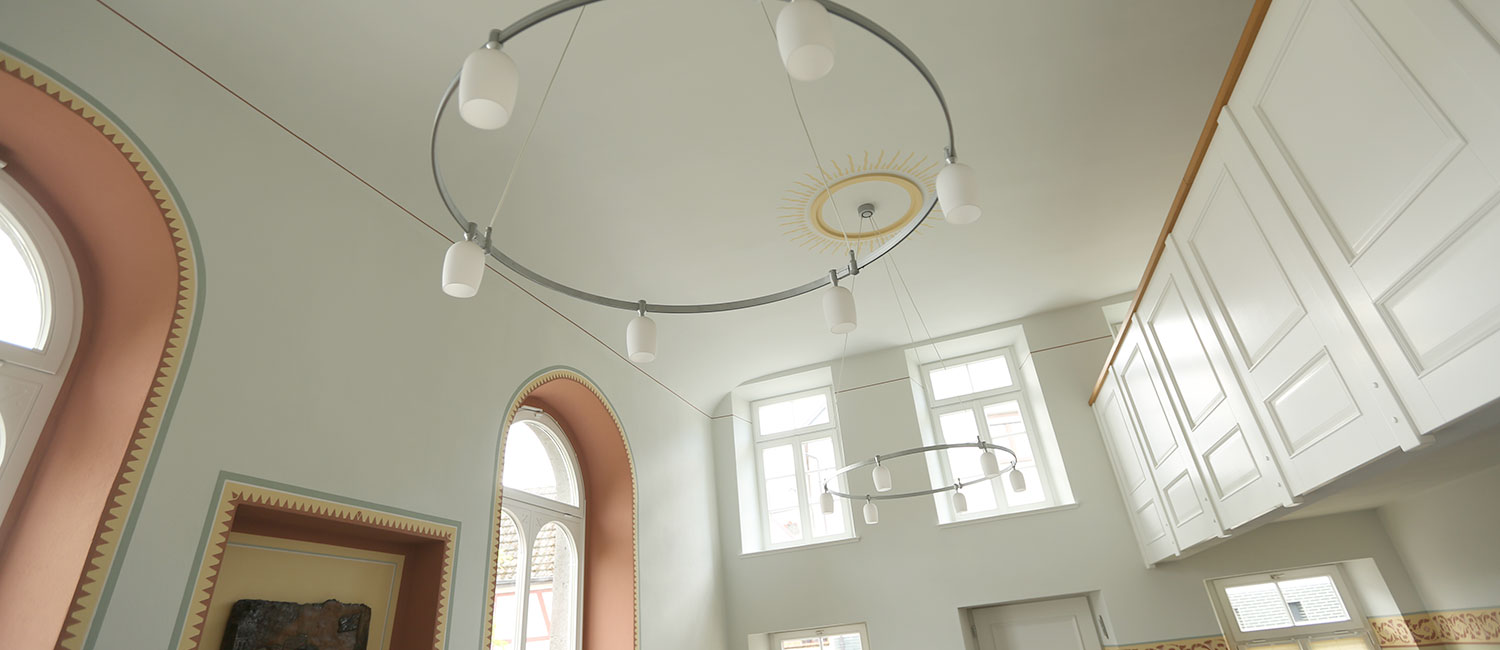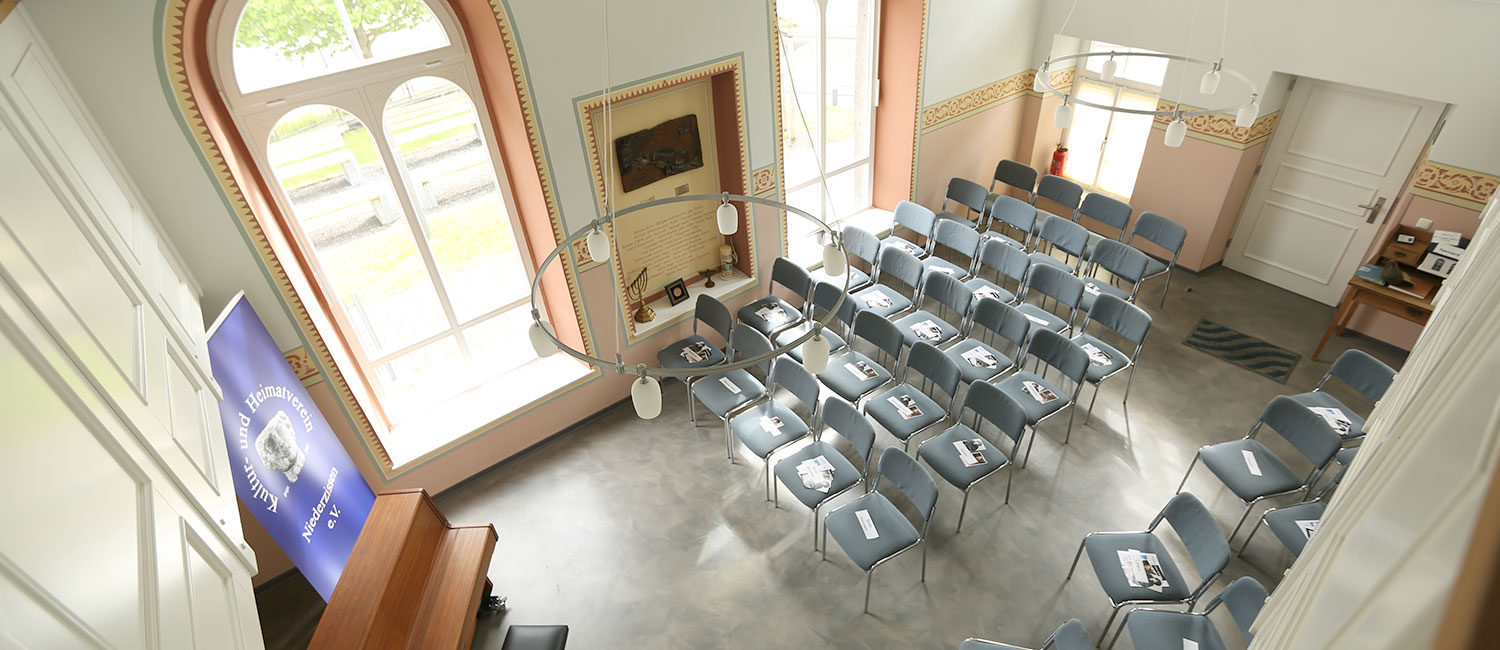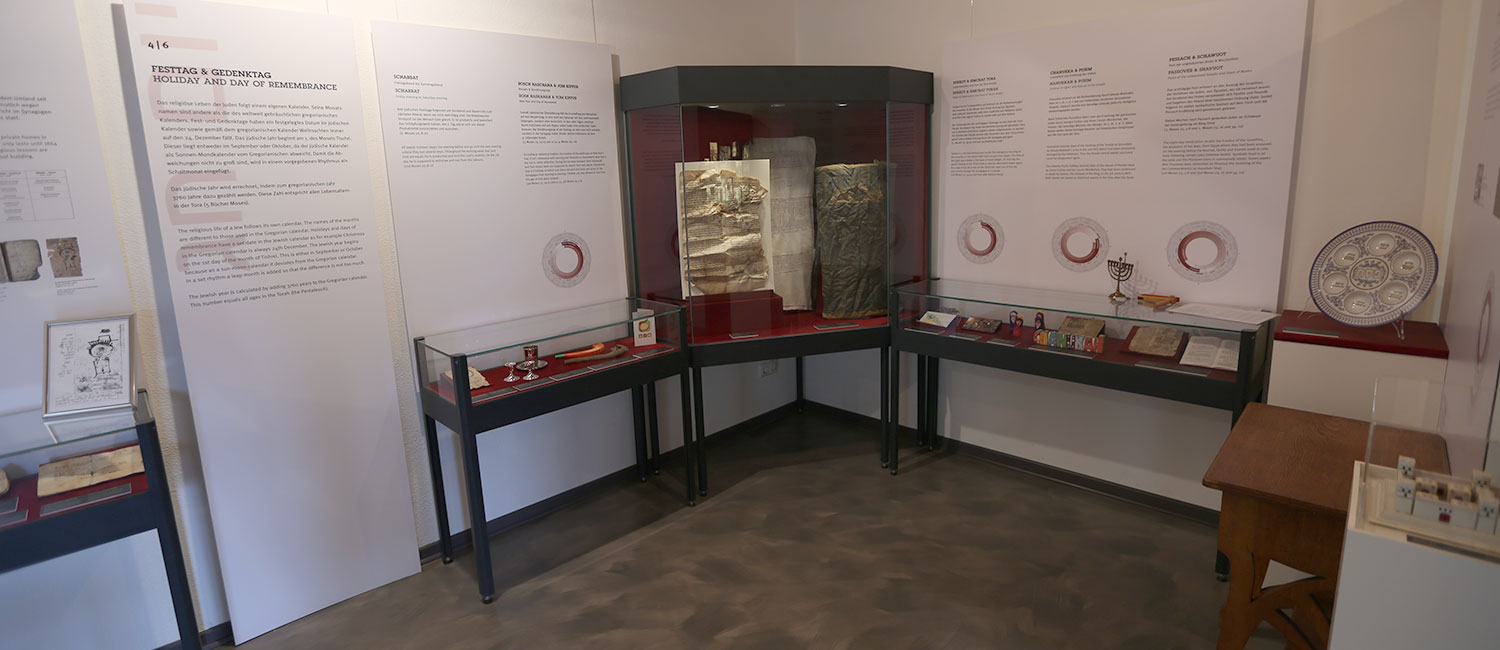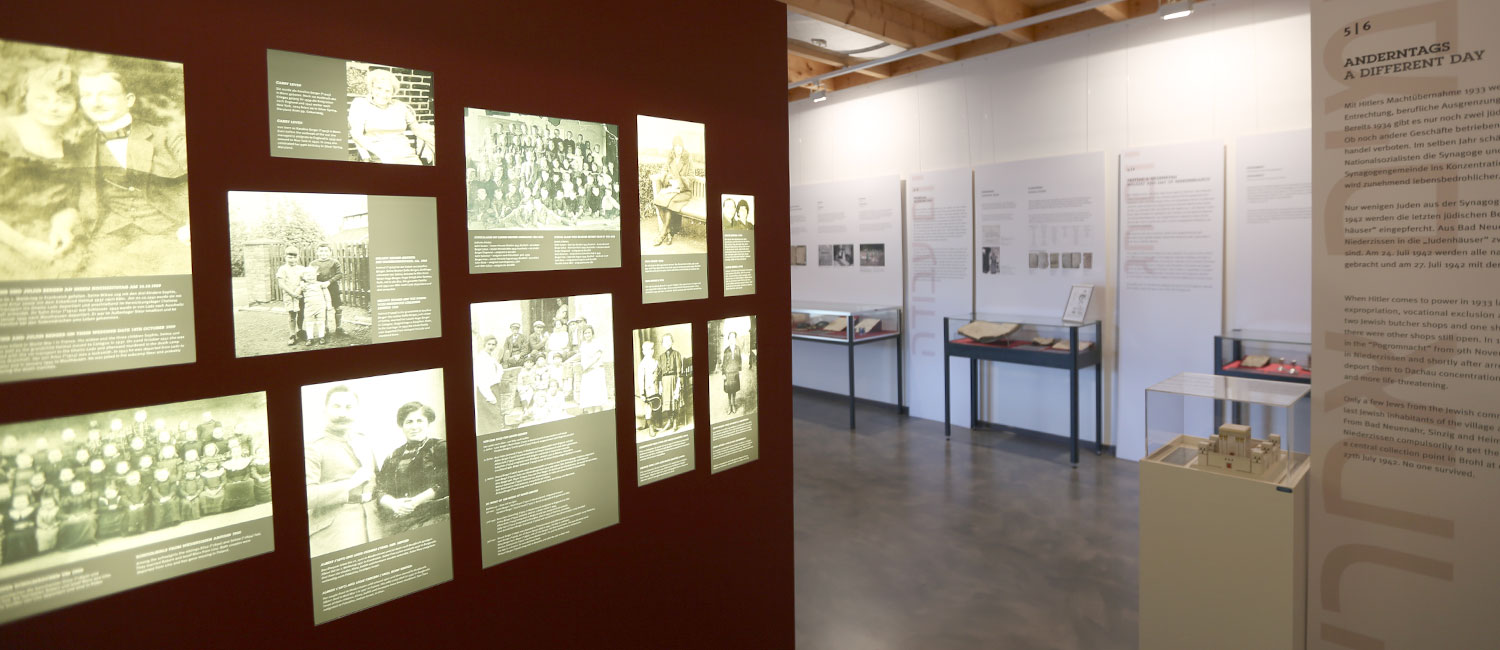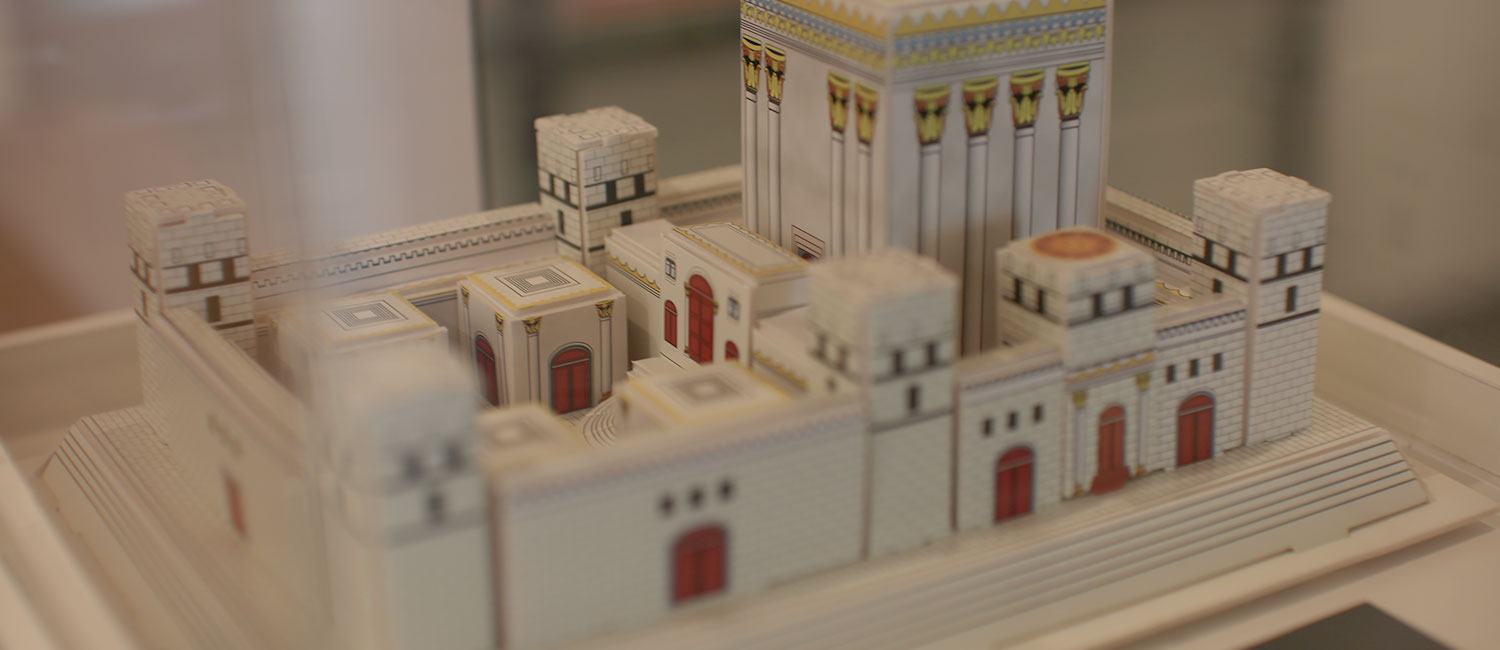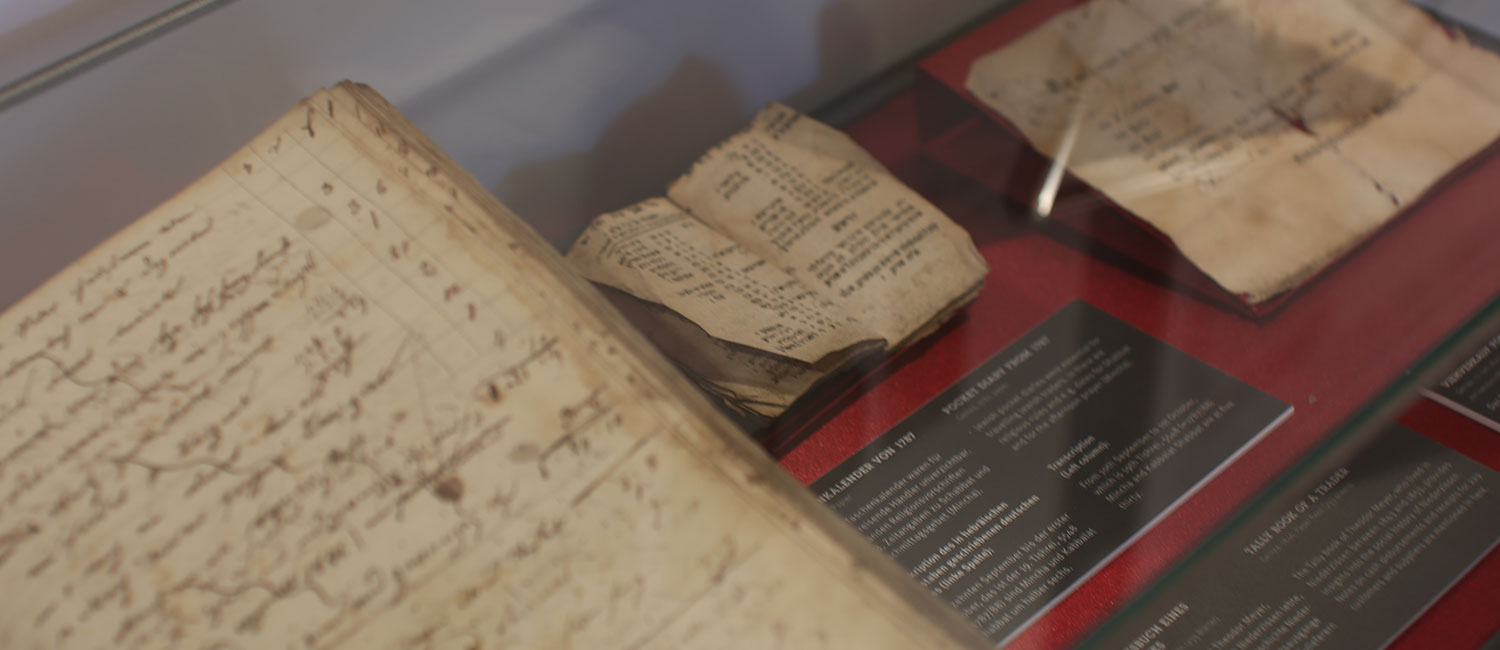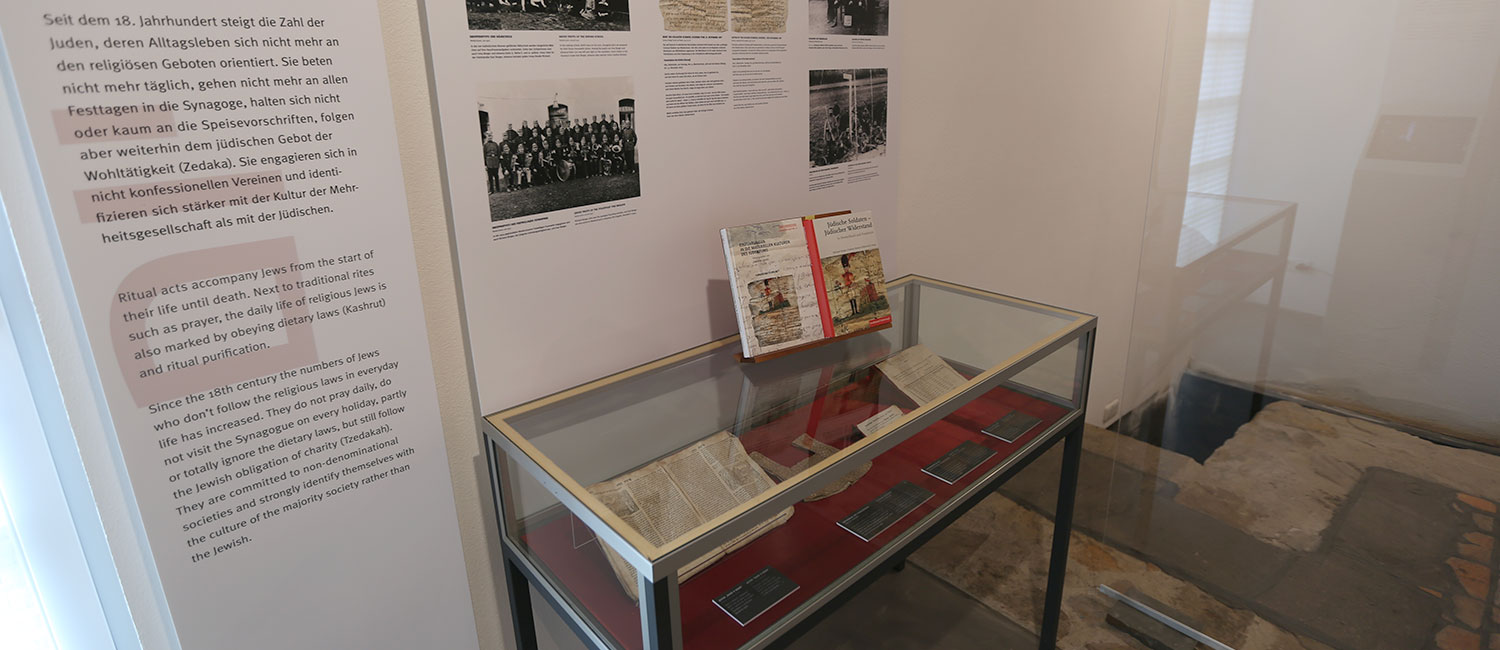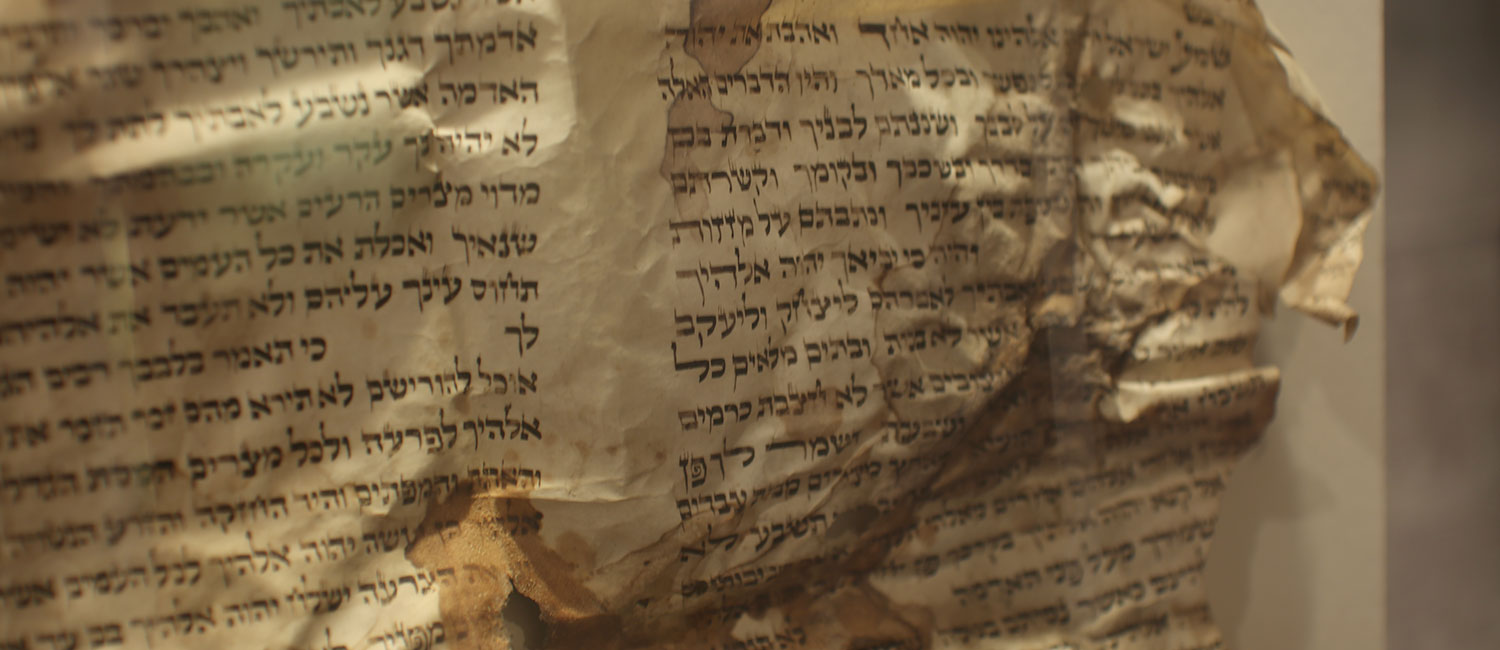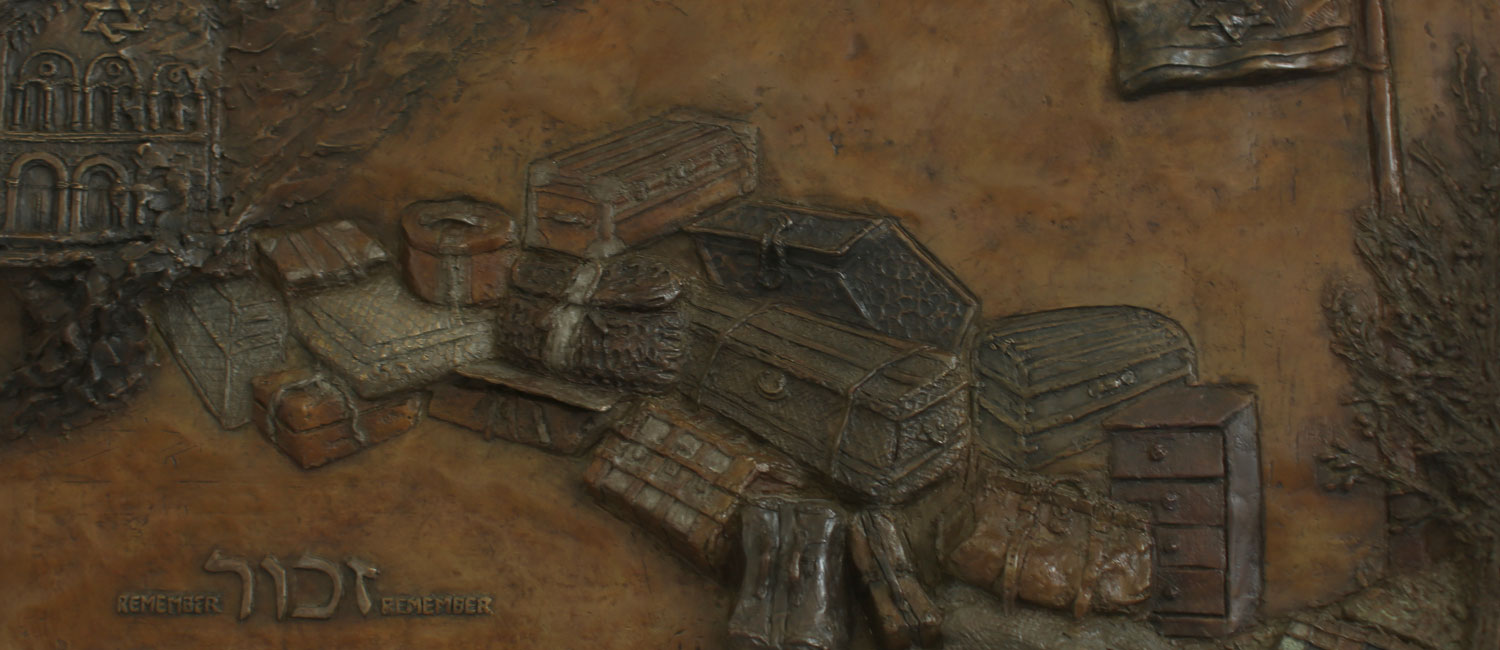On Jewish History in Niederzissen
In 1979 Richard Berger, son of the last head of the Jewish congregation of Niederzissen, confirmed that the now lost “Memorbuch” (memory book) of the Jewish congregation contained an entry from the year 1250 – a clear indication of an early Jewish congregation in Niederzissen. The presence of such a Jewish congregation can be documented with certainty from at least 1510 onward. A large number of bills and receipts from the lords of Olbrück in particular demonstrate payments of protection money, burial fees, or commercial taxes from Jews in Niederzissen to each respective nobleman ruling since that time.
In the valley Niederzissen, Jews were part of the community for centuries and played an important role in village life. They settled predominantly in the Mittelstraße, which was soon commonly called “Judengasse” (Jew alley). In 1925, 73 out of 1258 inhabitants of Niederzissen were of Jewish faith. This history of the Jewish congregation ends in 1942, after years of prosecution, with the eventual deportation of all remaining Jews to the Nazi concentration and extermination camps.
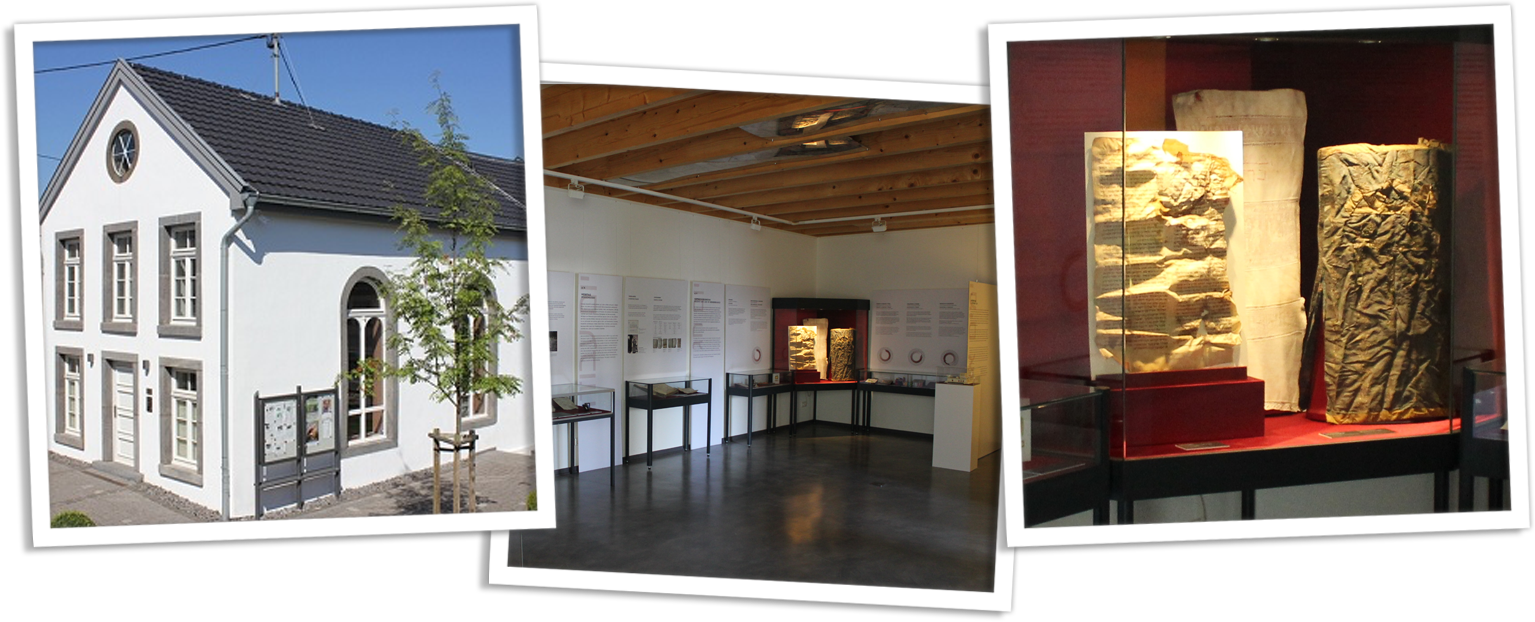
On the History of the Synagogue until its Destruction in 1938
On June 3rd, 1838, the Jewish congregation of Niederzissen paid 100 thalers for a property formerly used for agriculture, including a residential building and a barn. After the barn was torn down, construction on a Synagogue began. It was formally inaugurated on September 3rd, 1841. For the first time, the Jewish congregation had its own large place of worship and a community center. Its members mostly came from the various parts of todays combined villages of the Brohl valley, namely Burgbrohl, Galenberg, Glees, Hain, Kempenich, Lederbach, Oberzissen, Niederzissen, Rieden, Spessart, Volkesfeld, Wehr, Weiler and, for some time, from Königsfeld including the villages of Dedenbach and Schalkenbach.
The Nazi-regime utilized the murder of German diplomat Ernst vom Rath in Paris on November 9th, 1938, as a welcome pretense for a pogrom lasting from November 9thto November 11th, 1938 – cynically called “Reichskristallnacht” (crystal night”) by the Nazis. In the early hours of November 10th, 1938, the Synagogue in Niederzissen was desecrated was well. All furniture, the lectern, the Torah ark and the pews were smashed, books and prayer scrolls thrown into the streets, and the lights of the chandelier even shot out, according to witnesses.
What exactly happened on the night from November 9thto November 10thof 1938 in Niederzissen is still not clear today. Even after the end of the “Third Reich”, there has been no trial for any of the crimes committed there.
The Misappropriation of the Synagogue
Representatives of the still existing Jewish congregation were forced by the regime to sell the devastated (and thus desecrated) Synagogue the same year, 1938. They chose to accept the offer of August Blankart, a blacksmith from Niederzissen. Blankart had already bought his house from a Jewish family in 1914, located directly opposite the Synagogue in the Mittelstraße. Ever since, he had a good and close relationship with all his Jewish neighbors.
On April 28th, 1939, Dr. jur. Adams notarized the sales contract in Sinzig. Since that day, the Blankat family operated a smithy in the former Synagogue building, with an annex built in 1955 to house a workshop for repairs on tractors and agricultural machinery. The former community building, which included the Mikweh, the ritual bath, had already been torn down in 1940. The front yard was used as a parking- and storage space. After the workshop closed down at the end of 1994, the “old smithy” and its entire furnishings fell out of use completely.
Rethinking and Finding New Uses
After the blacksmith business came to an end, some suggestions were made of buying the property for the municipality. From 2007 onwards, a wide-ranging and sometimes emotional public debate took place over the future of the former Synagogue/old smithy. On November 9th, 2009, the municipal council of Niederzissen – with financial support from the cultural foundation of the state of Rhineland-Palatinate – decided to buy the former synagogue, to establish a memorial and meeting center within. After approval of significant funding from several state sources (from the village renewal fund and the monuments preservation fund of Rhineland-Palatinate, the German foundation for monuments preservation) and pledges of massive contributions of their own labor from the members of the local cultural and heritage society, renovations and remodeling finally started in the spring of 2011 and were completed with the inauguration celebrations of March 18th, 2012. Since then, the cultural and heritage society of Niederzissen has been contracted by the municipality to run daily operations of the location.

